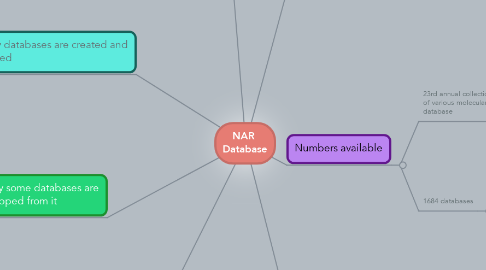NAR Database
por Syafiqah Isham


1. Why databases are created and shared
1.1. For purpose of storing the biology information
1.2. Data is secured
1.3. Make information being spread faster
1.4. Everyone can excess to the database easier.
2. Why this databases need to be grouped
2.1. To retrieve more information efficiently
2.2. Easy to browse and searched
2.3. For comparative purposes
2.4. To avoid data redundancy
2.5. To avoid data redundancy
3. Why some databases are dropped from it
3.1. Remove obsolete websites
3.2. Clean up exceeded 1685 databases
3.3. Non-responsive resources
3.4. Example: Exdon had to removed because:
3.4.1. Taken to commercial route
3.4.2. Did not provide free version
4. Group members: Nurzulaina Anis Natasha Saidatul Umiyah Nurshafika Nurul Syafiqah
5. Criteria for selection into NAR Database
5.1. Constructed 2 new databases. Example:
5.1.1. dbSUPER
5.1.2. SEA
5.1.3. Dfam
5.2. Freely available to all via the web without the need to register or login
5.3. Maintain database under the same URL for at least 5 years after the publication data
5.4. Database abundancy
6. Organization of database
6.1. Nucleic Acids Research Database
6.1.1. Major grouping
6.1.1.1. Nucleic acid sequence and structure
6.1.1.2. Protein sequence and structure
6.1.1.3. Metabolic and signalling pathway
6.1.1.4. Viruses, bacteria, protoza and fungi
6.1.1.5. Human diseases and drugs
6.1.1.6. Mitochondrial database
6.1.1.7. Chemical compound database
6.1.1.8. Plant
7. Numbers available
7.1. 23rd annual collection of description of various molecular biology database
7.1.1. 95 updated paper on database resources that's been previously featured in NAR Database
7.1.2. 62 updated databases
7.1.3. 17 papers with update on database resources whose description have been previously published in other journal
7.2. 1684 databases
7.2.1. 88 new data resource
7.2.2. 23 obsolete website removed
7.2.3. 15 categories
7.2.4. 14 subcategories

